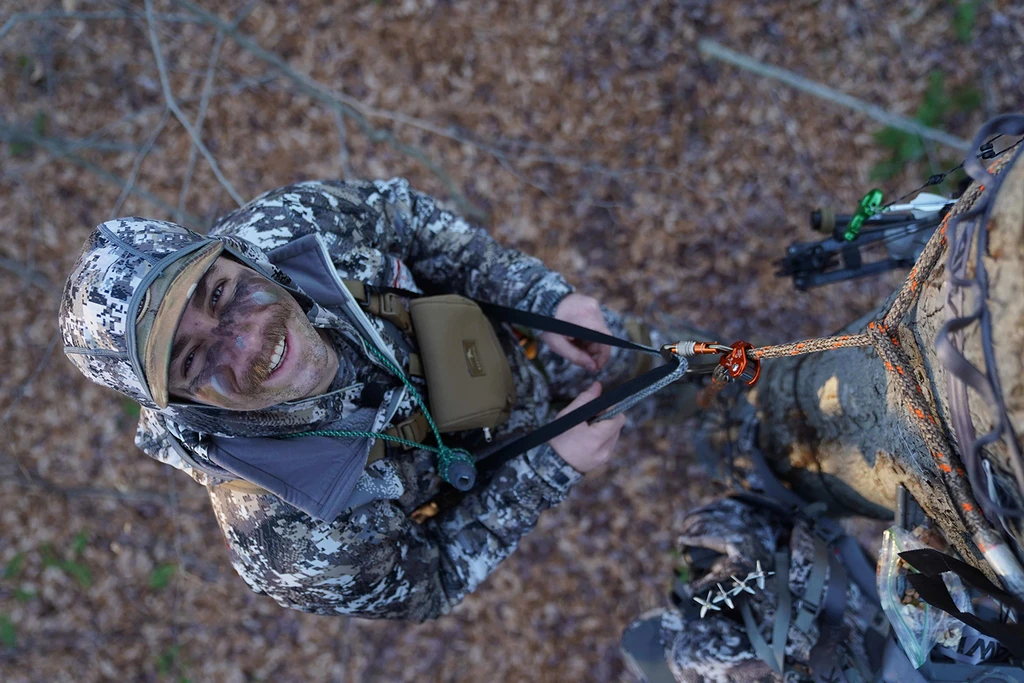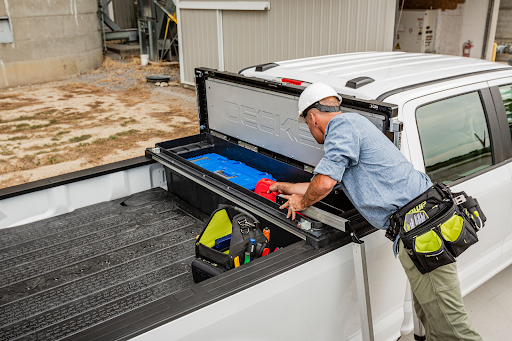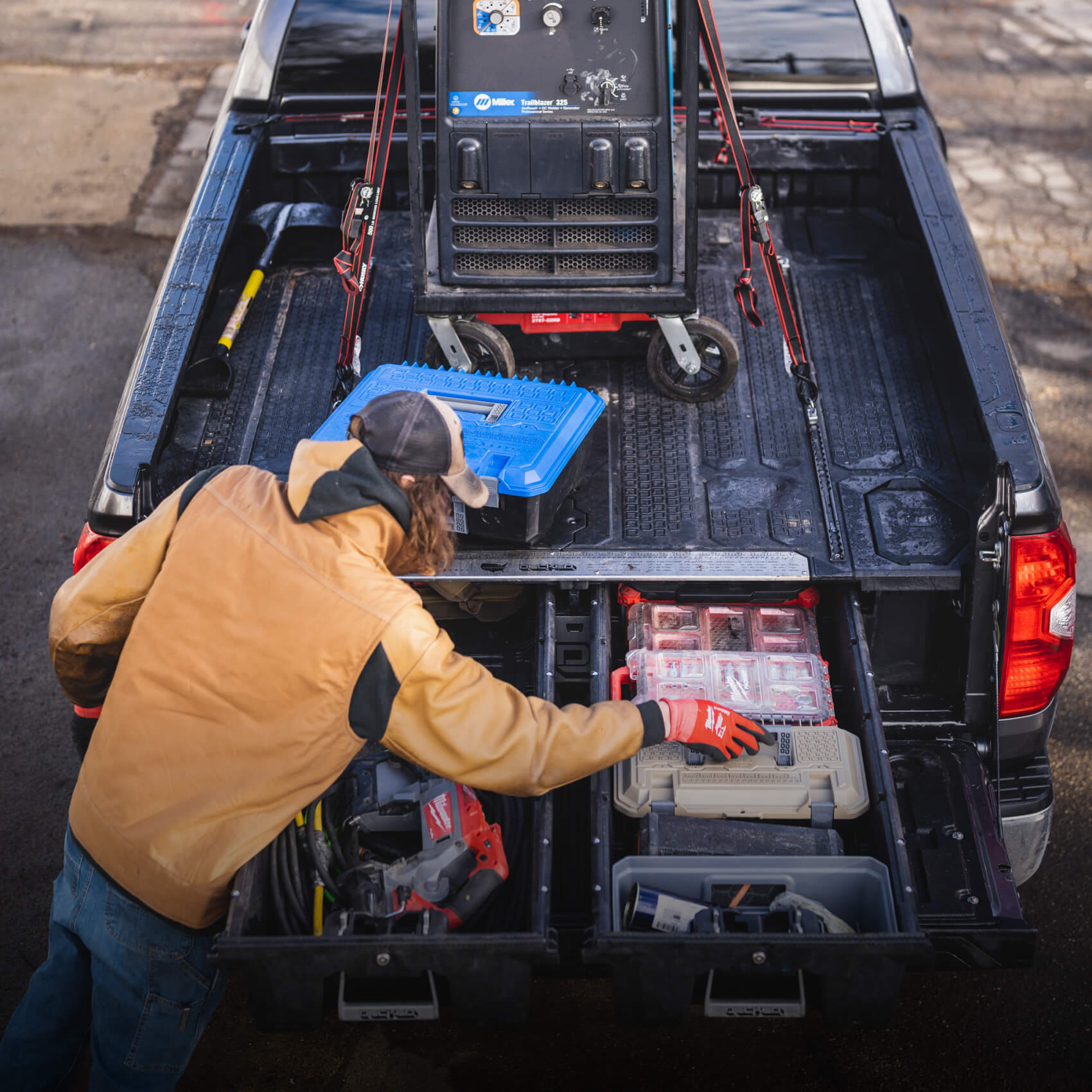If you regularly use a truck for work, play, or the serious business of fishing, you have all kinds of tools and equipment to take with you. Carrying many tools around can create issues, including damage to your truck bed and the tools themselves. (Not to mention those back muscles!)
Some tools and specialty equipment cost a whole lot, so you want to keep them in good shape. A high-quality tool box stores and organizes your tools and protects them from harsh weather and low-life thieves who want what you have.
Here’s the low-down on all things tool box. In this article, we’re going to discuss:
Table of Contents
Why Every Truck Owner Needs a Truck Tool Box
There are so many benefits to having a good, sturdy tool box installed in your pickup. Let’s take a look at some of the fundamental reasons to invest in one, shall we?
- Security from theft. A good tool box is lockable and nearly impossible to pry open. A hard-as-nails tool box will give sticky-fingered crooks a really bad day.
- Protect your equipment and tools from the elements. Ensure your equipment and tools are kept safe, dry, and free from rust and damaging elements. Mother Nature’s out to get your tools, son. Time to store them away in a tool box so your equipment will last longer.
- Save money and time. Not having to replace your tools regularly is an obvious money saver. Saving time searching for tools and smaller items means you’re going to get the job done quicker (and time is money, baby). For many trades, this can mean another appointment (or perhaps even a few more) can be taken in a day. Or it might mean you can get home and kick back a little sooner. Either way, time-saving benefits everyone!
- Organization and efficiency. Organization increases efficiency, and that’s like adding extra time to your day. Not only can you potentially hold more tools, but everything is easier to get to. When you know where every tool is, and you can go straight to it without wasting time hunting through a messy jumble of randomness.
Sustainable, long-term solutions. Ideally, a good tool box will last for years—possibly even longer than the tools you’re carrying. The more rugged and sturdy the construction, the better.
How to Choose the Right Tool Box For You
Tool boxes come in a variety of materials and sizes. The cost generally reflects the tool box’s overall quality (in this world, you get what you pay for). Consider exactly what you’ll be storing and transporting in your tool box. This will help you to choose the right one for your needs.
So, what exactly do you need? Something just to hold your tools in place, or something more high-quality and heavy-duty for hardcore usage and tool protection? Let’s look at a quick rundown of the pros and cons of different materials so you can get a better idea:
- Plastic pros: Lightweight and won’t rust.
- Plastic cons: Can crack or break easily, lower content capacity.
- Stainless steel pros: Tough and rigid.
- Stainless steel cons: Expensive and susceptible to rust and weather damage.
- Steel pros: Powder-coat finish and non-corrosive.
- Steel cons: Heavier than your mother-in-law.
- Aluminum pros: Sturdy and strong, non-slip and non-corrosive, and lightweight.
- Aluminum cons: Can be expensive, can perforate or dent.
How to Install a Regular Ol’ Truck Tool Box
Once you’ve done your research and found the right tool box for your needs, you’ll want to make sure it’s properly installed. You could pay someone to install it, but tool box installation is not complicated, and… you’re a truck owner who needs a tool box. We’re gonna assume you’re at least a little handy.
What You’ll Need
The exact tools you need depend on the type of tool box you have. Some might require you to drill holes. Most tool boxes will require at least the below things, though, so get this stuff together before you begin.
- More than 1/4 of a standard human brain. Installing a truck tool box is not rocket science, but you can’t go in there with nothing.
- Work gloves.
- Measuring tape.
- Foam padding or rubber padding materials.
- Strong scissors or a craft knife.
- Screwdriver or drill.
- Hardware (your bolts, nuts, and screws).
- Your new tool box (seems like a no-brainer, but see above).
- A friend to give you a helping hand.
- A cold one to enjoy once you’re finished.
Some new tool boxes come with everything you need for installation. If not, you’ll need to measure it and make sure you’re getting the right sized foam padding and any nuts, bolts, or screws necessary. Most tool boxes use J-bolts for secure installation.
The Steps
It’s so easy that you should be a bit embarrassed even reading this article. But, since you’re here, there are only a few simple steps involved. It shouldn’t take you long to get your new tool box installed and ready for action.
- Step 1: Decide where you’re going to place your tool box. (A standard crossover box will go toward the front of your truck bed cargo bay.) Be careful during this step. You want to balance having as much space in your truck bed behind the tool box and getting the tool box too close to the cap and not being able to open it all the way or busting your rear camera.
- Step 2: Measure the foam padding and put it in place. You can skip this step if you’ve got a truck bed liner.
- Step 3: Position your tool box. Make sure you can fully open your tool box lid. If the lid touches the truck cab when open or the box obstructs the driver’s view or camera, you need to adjust the box position again. Some tool boxes need a few inches for clearance.
- Step 4: If your truck doesn’t have pre-drilled holes in the bed rails, you’ll need to measure and drill holes on both sides. If your truck does have existing holes, you can skip straight to the next step.
- Step 5: Place the rubber J-bolt plugs into the four holes.
- Step 6: Insert the J-hook into the hole from under the bed rail. Push the threaded part through the rubber plug.
- Step 7: Apply a washer and tighten. Secure away!
Repeat Steps 6 and 7 with all four of the J-hooks and J-bolts and you’re done!
Simple, right? You just need a buddy on the other side to lift it, then move it around and line up the holes.
The Best Tool Box for Every Truck Owner

Finding a tool box for your pickup truck that ticks all the boxes on your wishlist can prove to be difficult and expensive. That’s exactly why we made a list of the problems most truck tool boxes have and engineered a product that solves them.
We know what you need because we’ve been there. Hell, we LIVE in our trucks. Here’s the low-down..and why we think it’s the best thing since beer coozies were invented.
The New DECKED Tool Box
-
- Construction: The new DECKED Tool Box is engineered out of some serious sturdy stuff. Injection-molded, high-impact polymer resin not only looks good, but it also won’t dent or crack , no matter what you throw at it.
- Weatherproof: Because it is molded (not welded), you get a seamless lid and tub. Its moisture-repelling, watertight architecture seals tightly when closed thanks to an EPDM lid gasket channel. That means your tools are kept bone freakin’ dry and protected from whatever the weather throws at it , too! (Did we mention that the anti-corrosion treated steel and aluminum hardware ensures this tool box will last for years?)
- Security: It’s also one of the most secure tool boxes available in today’s market. The steel armored locking mechanism is easy to work with a key but is like Fort Knox without one.
- Accessibility: Grabbing your tools from the side of your truck is as easy as Sunday morning. Just use the integrated ladder , which folds inside the box like a telescope when not in use. It does this without blocking access to the tool box contents.
- The Lid: The lid is reinforced with steel, yet it opens and closes effortlessly, thanks to torsion springs. These fail less than the gas struts used in other high-end tool boxes. No slamming your fingers in this one!
- Low Profile: It doesn’t block your rear window. Whatever type of truck you have, you can maintain your truck’s low profile and even use it with a tonneau cover.
- DECKED D-Box: Making the Tool Box even easier to keep organized, the price includes a full-sized, blue DECKED D-Box that fits snugly inside the tool box.
- Dimensions: 76″ L x 22″ W x 20.53″ H (Height above bed rail: 5.78″)
- Capacity: 9.82 ft³; 73.4 Gallons
- Weight: With the ladder, the Tool Box comes in at 113.5 lbs. Without the ladder, it’s 101 lbs.
- Price: You can get yourself a DECKED Tool Box for $675 without the ladder or $825 with the ladder.
- Warranty: It comes with a limited lifetime warranty, so in the unlikely event of a manufacturing fault, DECKED has you fully covered.
Compatibility: You’re wondering whether the DECKED Tool Box works with the DECKED Drawer System, right? That depends on your truck and on when you bought your DECKED Drawers. The DECKED Drawer System is not compatible with the DECKED Tool Box for short beds: 5’6″ or standard 6’6″ bed length trucks… but it IS compatible with select 8-foot Drawer Systems.
>

How to Install the DECKED Tool Box
If you thought the decision to get a DECKED Tool Box was easy, wait until you hear how easy it is to install.
What You’ll Need
- 3/8” socket
- Ratchet
- Rubber pads
The Steps

- Step 1: Place rubber pads on bed rails (1 per side).
- Step 2: Carefully place the Tool Box into place on top of rubber pads.
-
Step 3:
Open Tool Box lid to ensure it doesn’t hit the back of the cab.
- Warning: Shift the Tool Box as needed for necessary cab clearance.
-
Step 4:
Install two bed rail clamps on each side of the Tool Box.
- Secure clamps with bolts, washers, and nuts.
- Tighten all four bolts and test the tightness.
Using the Ladder
- Step 1: Slide it out until you hear the first “click.”
- Step 2: Continue sliding/extend the ladder until you hear the second “click.”
-
Step 3:
Grab handle on
Tool Box
for support and ground the ladder.
- Caution: Don’t climb into the truck’s bed from the ladder. It could swing into the truck and cause exterior damage (the ladder is designed for the user to reach over the sides).
It’s that simple to outfit your truck with a good-looking, waterproof, organized tool box that’s safe for your valuable tools. So, what’re you waiting for? The Tool Box of your dreams has arrived, ladies and gents!
You know what to do. Let’s get to work.





